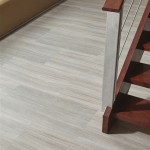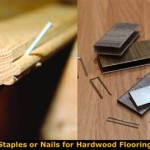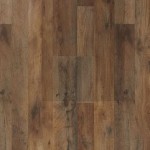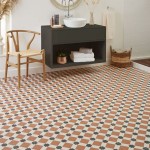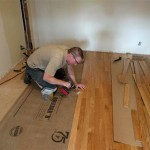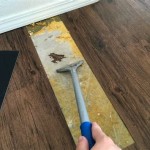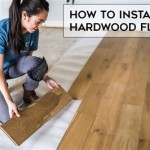Victorian Style Vinyl Flooring: A Durable and Elegant Choice
Victorian style vinyl flooring presents a compelling option for individuals seeking to replicate the aesthetic grandeur of the Victorian era while benefiting from the practicality and durability of modern materials. The Victorian era, spanning from 1837 to 1901, was characterized by elaborate ornamentation, intricate patterns, and a strong emphasis on quality craftsmanship. Victorian interior design often featured rich colors, detailed motifs, and the use of materials such as marble, wood, and intricately patterned tiles. Modern vinyl flooring, designed to emulate these characteristics, offers a cost-effective and low-maintenance alternative to traditional materials.
Vinyl flooring, generally composed of multiple layers including a wear layer, a printed decorative layer, and a backing layer, has undergone significant advancements in recent years. High-resolution printing techniques now allow for remarkably realistic reproductions of various materials, including wood grains, stone textures, and, most relevantly, the complex patterns associated with Victorian design. The resulting flooring can convincingly mimic the look and feel of original Victorian floor tiles, wood parquet flooring, or even intricate marble inlays, without the associated costs and maintenance challenges.
The appeal of Victorian style vinyl flooring extends beyond mere aesthetics. It provides a practical solution for modern living, offering resistance to water, scratches, and stains. This durability makes it suitable for high-traffic areas within a home or commercial space, such as kitchens, bathrooms, and hallways. The ease of installation, often involving click-lock or peel-and-stick systems, further enhances its appeal for both DIY enthusiasts and professional installers.
Key Points of Victorian Style Vinyl Flooring
Understanding the key characteristics of Victorian style vinyl flooring is crucial for making informed decisions about its suitability for specific design projects. These key points encompass the aesthetic elements, functional benefits, and practical considerations associated with this type of flooring.
Aesthetic Replication of Victorian Designs
The primary draw of Victorian style vinyl flooring lies in its ability to replicate the distinctive aesthetic of the Victorian era. This replication encompasses a range of design elements, including color palettes, patterns, and textures. Common color palettes often include rich, saturated hues such as deep reds, greens, blues, and browns, reflecting the opulent tastes of the Victorian period. These colors are frequently combined with contrasting accents to create visual interest and depth.
Patterns are equally important in capturing the Victorian aesthetic. Geometric patterns, such as checkerboard designs, intricate borders, and repeating motifs, are frequently employed. Floral patterns, inspired by the natural world, are another common element, often featuring stylized representations of flowers, leaves, and vines. These patterns can be replicated with remarkable accuracy on vinyl flooring, creating a visually striking and historically inspired floor covering.
Texture plays a subtle yet significant role in enhancing the realism of vinyl flooring. Embossed surfaces can mimic the texture of wood grain, stone, or tile, adding a tactile dimension to the floor and further blurring the line between the vinyl replica and the original material. This attention to detail contributes to the overall authenticity of the Victorian style.
The ability to replicate the look of encaustic tiles is a further benefit. Encaustic tiles, popular during the Victorian era, feature intricate patterns created by embedding different colored clays into the body of the tile. Victorian style vinyl flooring can accurately mimic the look of these expensive tiles at a far lower price point.
Durability and Practical Benefits
Beyond its aesthetic appeal, Victorian style vinyl flooring offers considerable practical benefits. Its inherent durability makes it well-suited for areas prone to wear and tear, moisture, and spills. The wear layer, typically made of a clear protective coating, shields the underlying printed design from scratches, scuffs, and fading. This wear layer is often measured in mils (thousandths of an inch), with thicker wear layers offering greater protection and longevity. For high-traffic areas, a thicker wear layer is generally recommended.
Water resistance is another key advantage of vinyl flooring. Unlike hardwood or laminate flooring, vinyl is impervious to water, making it an ideal choice for bathrooms, kitchens, and other areas where moisture is a concern. This water resistance helps prevent warping, swelling, and mold growth, ensuring the long-term integrity of the floor.
The ease of maintenance is a further practical benefit. Vinyl flooring is relatively simple to clean and maintain, requiring only regular sweeping and occasional mopping. Unlike natural stone or wood, it does not require specialized cleaning products or sealing. Spills can be easily wiped up without staining or damaging the floor.
Vinyl flooring can also provide a degree of sound insulation. The backing layer, often made of foam or felt, can help dampen sound transmission, making it a quieter flooring option compared to harder surfaces such as tile or concrete.
Installation and Cost Considerations
Victorian style vinyl flooring offers a range of installation options, catering to different skill levels and project requirements. Click-lock systems, which involve interlocking planks or tiles, are particularly popular for DIY installations. These systems require minimal tools and can be installed relatively quickly and easily. Peel-and-stick vinyl tiles are another option, offering a simple and straightforward installation process. However, proper subfloor preparation is essential for both click-lock and peel-and-stick systems to ensure a level and stable surface.
Professional installation is also an option, particularly for larger or more complex projects. Professional installers have the expertise and equipment to ensure a proper and long-lasting installation. While professional installation adds to the overall cost, it can be worthwhile for individuals who lack the time or skills to install the flooring themselves.
The cost of Victorian style vinyl flooring varies depending on the quality of the materials, the thickness of the wear layer, and the complexity of the design. Generally, vinyl flooring is more affordable than natural materials such as wood, stone, or tile. This cost-effectiveness, combined with its durability and low maintenance, makes it an attractive option for budget-conscious homeowners.
Beyond the initial purchase price, the long-term cost of vinyl flooring is also relatively low. Its durability reduces the need for frequent repairs or replacements, and its low maintenance requirements minimize the ongoing cost of cleaning and upkeep.
Ultimately, Victorian style vinyl flooring presents a compelling combination of aesthetic appeal, durability, and affordability. By carefully considering the various design elements, practical benefits, and installation options, individuals can make informed decisions that align with their specific project requirements and budget constraints.

Edwardian Star Sand Sheet Vinyl Flooring 3 Metre Wide Roll 118

Edwardian Star Blue Sheet Vinyl Flooring 2 Metre Wide Roll 78

Victorian Vinyl Flooring Traditional Designs Meet Modern Style For The Floor More

Edwardian Star Terracotta Sheet Vinyl Flooring 3 Metre Wide Roll 118

Victorian Treasure Smoke Maximus Invictus Vinyl Flooring

Rapport Cyrilo Vinyl Flooring Tapi Carpets Floors

Victorian Floor Tiles To Update Your Home Goodhomes

Tesated Victorian Geometric Grey Brown Black And Beige Vinyl Flooring Era Barlow

Geo Effie For The Floor More

Blue Green Victorian Tile Style Comet Vinyl Flooring More For Your Floor
Related Posts

